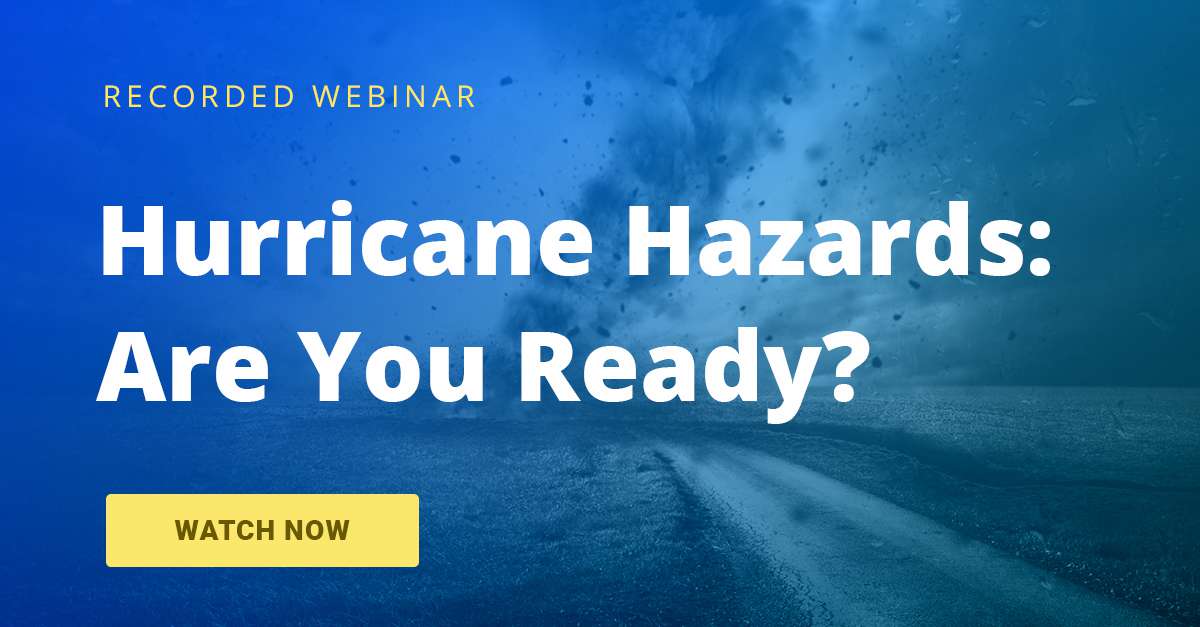How Remote Working Boosts Productivity Post-Hurricane
Anyone who has survived a strong hurricane – like Harvey, Maria, Sandy, or Irma – can attest that their neighborhoods resembled ghost towns in the aftermath.
Houses and local businesses are often damaged or destroyed. Additionally, many utilities and transit systems may not operate at a normal capacity, if at all. This all prevents many organizations from quickly reopening after a hurricane. But just because a company’s physical location may not be operational, that doesn’t mean that businesses can’t continue operating.
As previously discussed, strong hurricane preparedness and recovery plans should address the following occurrences:
- Damage to physical property
- Evacuation/relocation of staff, customers and vendors
- Lack of supplies to rebuild
- Damage to infrastructure
It should also detail how and when employees and management can resume working. A resilient business will aim to continue operations in the aftermath of a storm by activating remote working policies when possible. Employees who can work remotely are more likely to fulfill their responsibilities and goals while business leaders work to repair or rebuild the physical office space.
Equally important is the use of emergency notification systems (ENS) to ensure your employees’ safety and notify them to start working remotely. It can redirect employees to other sites that may not have been damaged by the storm. ENS can also be the communication method for safety checks during the active stage of the hurricane.
Joe Trainor, the program director of the Disaster Science and Management program and an associate professor of public policy and administration at the University of Delaware, said that remote working is an invaluable element of a recovery plan.
“There’s some balance required here. Give your people a little space to be creative,” Trainor said during a recent AlertFind webinar. “Be clear about what the goal is – taking care of clients – and then give your employees space to find ways to do that. Maybe your office is flooded and they need to Facetime or Skype clients instead of meeting with them in the office.”
Remote working would be especially helpful to bridge the gap when the company’s physical location is shut down. Additionally, if your employees’ homes or neighborhoods were damaged, remote working access may be the natural first step toward returning to normalcy. Employees can watch over their families while still supporting the business and getting tasks done. Or if they evacuated, they would be able to work from other states.
Develop Business Strategies and Policies
Even in the aftermath of a disaster, there is opportunity for growth and greater knowledge. Your organization could use this as a case study to determine its effectiveness and value.
Forbes recently cited a study in which two-thirds of managers reported an increase in overall productivity from their remote employees. And while post-disaster productivity rates have yet to be determined, it’s a safe assumption that most managers who already support remote working would certainly do so as part of an emergency preparedness plan.
This work arrangement is more than just a trend and is embraced by companies year-round. Large companies can save millions on rent alone by allowing remote working on a regular basis. There’s an incentive for smaller organizations as well. Global Workplace Analytics reports that if a typical business allowed their employees to telecommute for just half of the time, they could save an average of $11,000 annually. Other costs that can be avoided or reduced include office supplies, furniture, equipment, coffee and janitorial services.
Ultimately, remote working may reduce what Trainor referred to as “role strain,” where an individual feels torn between their personal and professional obligations. For example, your financial officer may be critical to your organization, but may also be a single parent whose child’s school is closed. Accommodating these dual needs can help the officer accomplish vital tasks without feeling as though he/she is neglecting responsibilities.
“Setting up those expectations ahead of time is really important,” Trainor said. “These are the situations where you actually need to strategically loosen organizational control. Because when you’re really challenged like this, the problem is, you don’t really know what you’re facing.”
To learn more from disaster preparedness expert Joe Trainor about readying your organization for hurricane season, watch our new webinar, “Is Your Organization Hurricane-Ready? 5 Actions To Take Now.”

You are well on your way toward protecting your staff and organization.
Take the next step toward protecting your organization by learning more about emergency notification systems and the vital role they play in your emergency preparedness plan.
